Month: July 2022
How to Monetize an App with Mobile Ads and Not Fail
Why Mobile Ads?
As an owner of a mobile application, you probably wonder how to make a profitable app by monetizing it. There are several strategies to choose from:
- Make your app paid
- Integrate in-app purchases
- Ask users for donations
- Use advertisements
There’s no best way to monetize an app, as each app is different. However, ads are the most universal and popular way to monetize your app. Let’s focus on the last option, as it’s one of the best ways to return your investments and suits every type of app.
For more than 50% of mobile users, apps are the first thing they interact with in the morning even before getting out of bed. Throughout the day, people spend lots of time on their phones, and the amount of time is only going to rise.
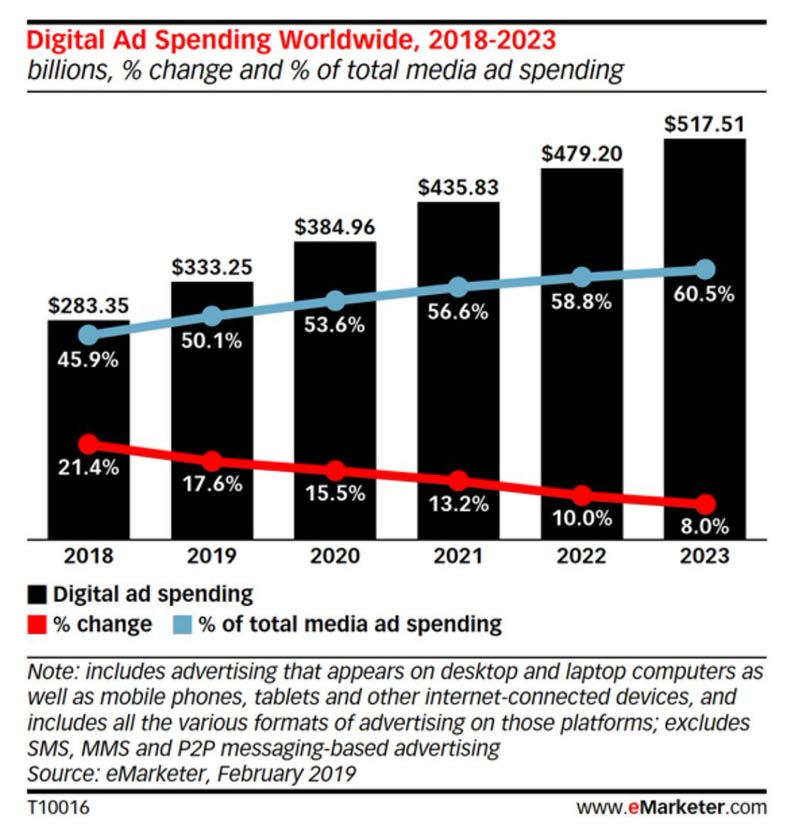
It’s no surprise that mobile advertising monetization is so attractive for business owners who want to promote their products and services.
Placing ads in your mobile application can also be valuable as a way of monetizing your app. According to Invespcro, mobile ad spending across the United States is rising every year, and this tendency isn’t going anywhere soon.
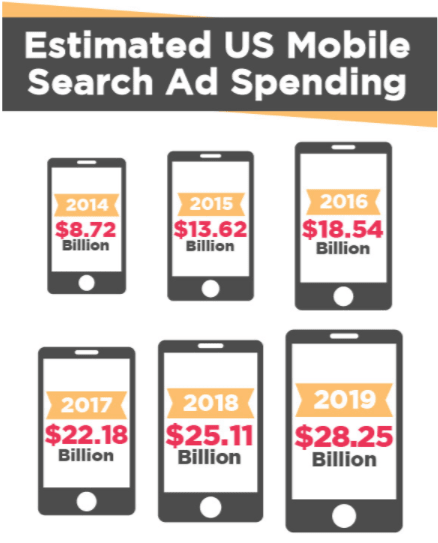
If you’re thinking about how to earn money with mobile apps, consider mobile advertising. It’s easy to put ads on your app, and it pays off if approached properly.
How do apps make money from ads?
The mobile advertising industry is based on supply and demand. Publishers and Supply Side Platforms (SSPs) represent the supply, while Demand Side Platforms (DSPs) represent the demand. The interaction between these two sides allows advertisers to place their ads on platforms.
Mobile ad networks bring this supply and demand together. They serve as intermediaries between app owners and providers.
Nowadays, there are lots of mobile app ad networks, and your main task as a mobile app owner is to choose which one will suit you best. All the networks are a bit different in terms of the campaigns, ad formats, operating systems, kinds of targeting, and key markets they support.
Let’s talk about some of these differences that concern you as an app owner.
Ad Campaign Models
Campaign types are basically business models that mobile ad networks use to run ad campaigns. There are five main types:
- Cost-per-mile
- Cost-per-click
- Cost-per-install
- Cost-per-action
- Cost-per-view
Cost-Per-Mile (CPM) means charging an advertiser for each “mile” their ads are shown. In this case, a “mile” means 1,000 showings. This business model is best for you as a mobile app owner and publisher, as it allows you to charge each time an ad is shown.
In this case, it doesn’t matter whether an ad campaign is successful or not – you’ll get revenue in any case, and that revenue will be easy to predict. However, this is also a downside. If ads are really effective, you may lose out on money you could have earned from their success. The next model would work better for you in this case.
Cost-Per-Click (CPC) is better for advertisers, as they pay only when their ads actually attract users. In the case of a successful ad campaign, the publisher wins as well, but the risks in this business model are higher for you. If few people click on ads, there’s a good chance you’ll be showing most ads for free.
Cost-Per-Install (CPI) means that you’ll receive money only when users actually install an app that’s being advertised. This model is also good for advertisers because they can count their ROI by looking at the price they pay for each new customer.
Cost-Per-Action (CPA) works similarly to CPI; however, it’s even more detailed. With CPA, an advertiser pays based on a specific action the user takes – for example, making a purchase, buying a subscription, or just signing up. This model is the most equitable for both parties, as it gives you more ways to monetize your app and gives advertisers more opportunities to grow their business.
Cost-Per-View (CPV) is the last business model on our list, and mostly it concerns video ads. Video advertisements are growing in popularity as video has proven to be one of the most memorable types of content. Consequently, the CPV model is becoming more widespread among advertisers and mobile app owners.
Choose the model that best suits your app and your monetization goals.
How to monetize an app: Mobile Ad Formats
In general, mobile ad networks support five types of in-app advertising:
- Banner ads are the most common for mobile ad monetization and are familiar to everyone. They can be static or contain animations integrated into the app’s UI.
- Native ads are a more advanced version of banner or video ads. They’re even more integrated into the UI, making them less intrusive.
- Interstitial ads are often displayed between app screens or levels in games. They take up the whole screen and cover an app completely.
- Video ads are usually used in media apps and take no more than 60 seconds. They’re divided into two types: in-stream and out-stream. In-stream videos take the whole screen and are displayed either before, after, or in the middle of other video content. Out-stream ads are placed in any other part of an app.
- OfferWall ads are interactive banners with offers for third-party applications.
- Rewarded video ads are popular in games: users watch ads in exchange for rewards they can later use in the game
Targeting
Mobile ad targeting is largely an advertiser’s concern; however, targeting also depends on the type of app, its audience, and any age restrictions (e.g. dating apps with an 18+ restriction). How much do apps make from ads depends on how well the targeting works.
Ads can be targeted based on parameters such as:
- Geolocation
- Device
- Carrier
- Age
- Interests
- Operating system
- Connection (Wi-Fi or 3G/LTE)
- Gender
Different mobile advertising companies offer different campaign models and ad formats, so after you choose what’s best for your app, you’ll need to choose a platform.
The next thing we’ll do is offer you mobile ad network comparison of the most popular mobile advertising platforms that allow app owners to monetize apps with mobile ads.
Top Six Mobile Ad Platforms
1. Google AdMob

Google is the best mobile ad network for getting in-app advertising revenue. Google knows so much about users that they’re able to make ads highly personalized and less intrusive than those of other networks.
If you’re just starting to monetize your app with ads, then this is the best option. However, many people complain that the revenue from AdMob could be higher, so you might look to other platforms for better payments.
Mobile platforms: iOS, Android
Ad formats: Native, Interstitial, Video
Campaign models: CPI, CPC, CPM
Targeting: Mobile platform, connection, geolocation, operating system, device, audience
Market: Global
2. Facebook Audience Network

Facebook is a large ad provider that has lots of options when it comes to advertising. Thanks to Facebook knowing a lot about their users, they can show your adds to exactly the people interested in your products most. Their ads respond to user behavior, so businesses can be sure to get the most relevant leads from their Facebook ad campaigns.
Mobile app owners and developers have lots of monetization options with Facebook Audience Network. It offers developers tools for building a monetization strategy, and promises to make the ads as native and non-invasive, as possible.
Mobile platforms: iOS, Android
Ad formats: Native, Video, Display, Rewarded Video ads, Interstitial
Campaign models: CPM, CPA, CPC
Targeting: Country, language, operating system, browser, behavioral, demographic
Market: Worldwide
3. Unity Ads

The Unity Ads network is targeted toward mobile game developers, and it was initially built to help monetize mobile games.
Video is the main format Unity offers, but other types are also available.
Mobile platforms: iOS, Android
Ad formats: Interstitial, Banner, Video
Campaign models: CPI, CPM
Targeting: Geolocation, connection, operating system, device
Market: US, Global
4. StartApp

StartApp impresses with the variety of possibilities it offers. It’s one of the most universal mobile ad platforms you can use to get ads in your app, as it offers advertisers and publishers almost all kinds of ad formats and app monetization models. Moreover, its targeting is also broad.
Mobile platforms: iOS, Android
Ad formats: Interstitial, Banner, Video, Full Page Ads, App Icons, Native
Campaign models: CPI, CPM, CPA, CPC
Targeting: Geolocation, connection, operating system, carrier, gender, device
Market: Global
5. Epom
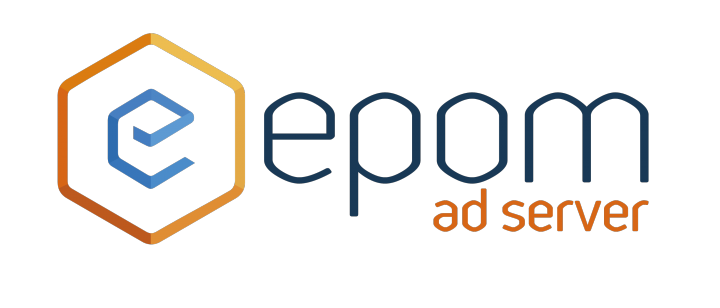
Epom is one of the easiest-to-use mobile advertising platforms as it handles everything – you just need to install one SDK and the monetization process will be handled by Epom. They’ll also analyze your audience and suggest ad formats that will best suit both you and your advertisers.
Mobile platforms: iOS, Android
Ad formats: Native, Video, Interstitial, Banner
Campaign models: CPM, CPA, CPC
Targeting: Country, language, operating system, browser, behavioral, demographic
Market: Canada, Europe, Germany, UK, Ukraine, USA
6. AdColony

AdColony is one of the top mobile ad networks, with 1.4 billion users globally.
Its core feature is Instant-Play HD video technology and rich media that helps make ads more engaging.
Mobile platforms: iOS, Android
Ad formats: Rich media, Video
Campaign models: CPM
Targeting: Demographic
Market: Global
How to get ads on your app and not scare off users
1. Decreased retention rate
This is one of the biggest problems you might face after you add advertising to your mobile app, as people tend to dislike ads. Besides, in some cases they can eat a considerable amount of mobile traffic.
This chart shows that mobile ads are the second-most annoying type of ads for users:
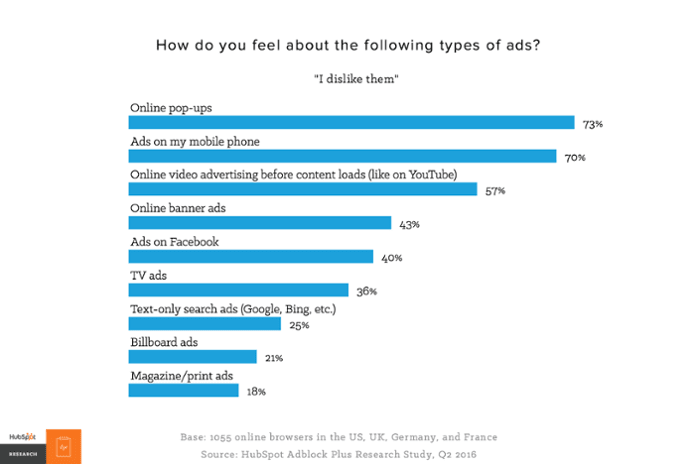
What users typically do when ads are too annoying is either delete the application or install an ad blocker.
The next chart shows which types of mobile ads annoy users the most:
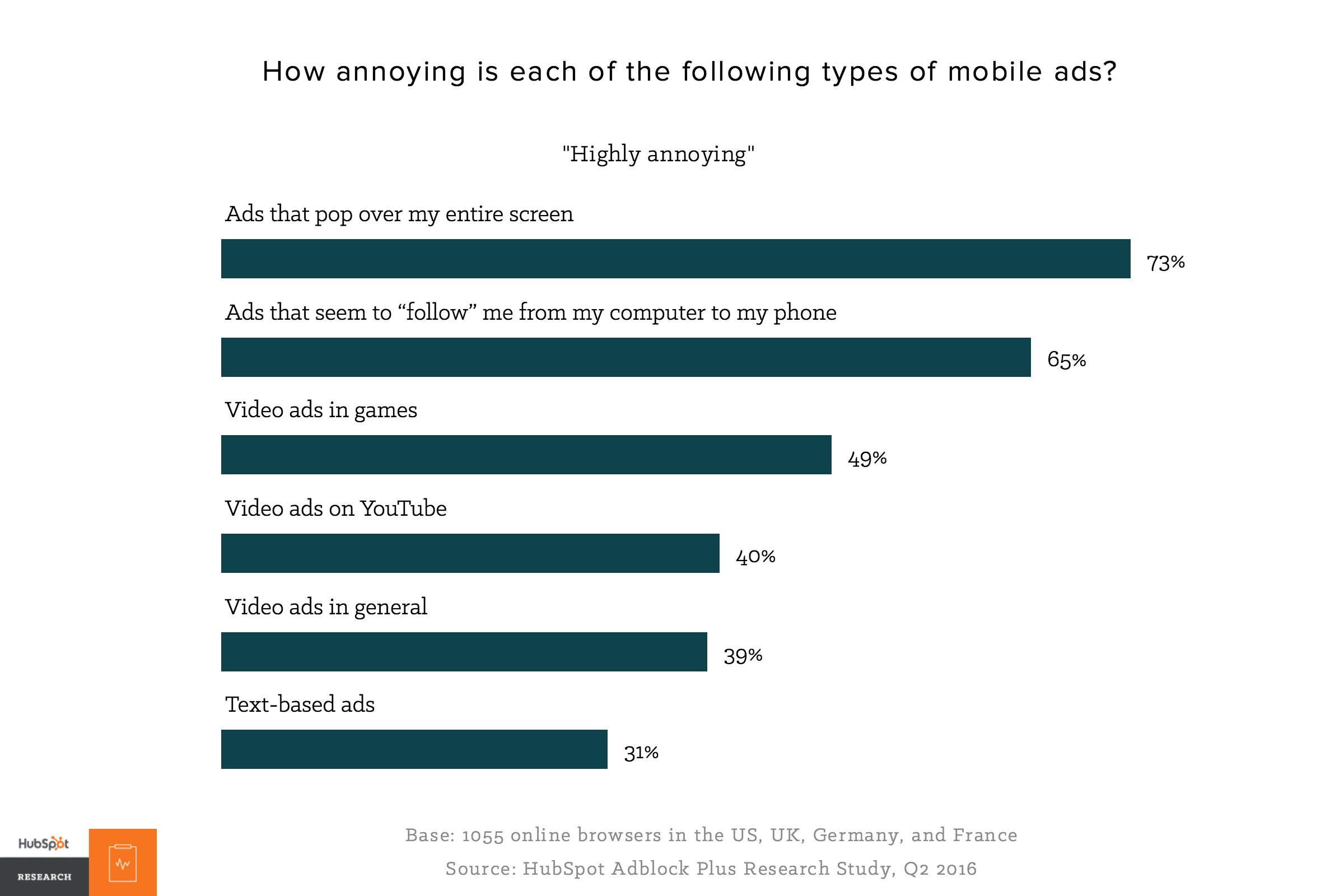
Solution:
- Avoid making ads too intrusive. Your users are actually smart and understanding people. A study by IPG Media Lab shows that 63% of users understand that applications need ads to earn money and therefore accept advertising.
- Give your users the opportunity to refuse seeing ads. It is one of the best practices of mobile app advertising. Usually, this is done in the form of an in-app purchase, so you can monetize your app partly that way.
2. Less app engagement
This problem usually concerns app owners a lot. If people click on ads, that automatically means they’re no longer using your app. After responding to ads, users are redirected to the advertiser’s website or application. This means that users may continually be distracted from your app.
With games, the return rate will likely be higher because users want to complete a level. With ecommerce, return rates may be lower.
Android and iOS have their own solutions to this. To return to your app, users will need to use a back button. In iOS, your application’s icon will be displayed in the notification shade.
Of course, this doesn’t guarantee that a user will return to your app, but he or she won’t abandon it completely.
Solution:
- Use push notifications to remind users about the application.
- Сhoose the screens you put ads on carefully. It’s a bad idea to put an ad on the registration screen.
3. Unclear Payments
Sometimes it can be a real challenge to choose an ad campaign model as well as terms of payment. There are generally three payment schedules, which dictate how many days you’ll have to wait to get paid after ads are shown – 15, 30, or 60. The fourth type is immediate payments, and they are a perfect option.
Determine which payment schedule suits you best and make sure the mobile ad network you choose offers it.
You’ll also need analytics to predict your income from mobile ads. Make sure you choose the right instrument for analyzing how your app is doing and how much money it can bring in with the help of advertising.
Solution:
- Integrate analytics to better predict revenue.
- Determine a suitable ad campaign model and strategy and choose a mobile ad network.
Conclusion
In this article, we answered the question that bothers most of mobile app owners: how to earn money on mobile applications. We also provided a mobile advertising platform comparison of the biggest ad networks.
Among all possible ways of monetization of mobile apps, advertising is one of the most popular. If you choose a mobile ad network carefully and make sure the ad format you choose works well with your application, ads can bring you benefit and not harm.
If you respect your users, they’ll be more loyal to you and accept the ads they need to watch.
So, how much money can you make from in-app advertising? The answer depends on your app, the number of its users, and your personal mobile ad placement strategy.
At Mobindustry, we can help you with app monetization using mobile ads. If you have any questions or want to monetize your app with ads right now, contact us for more information.

